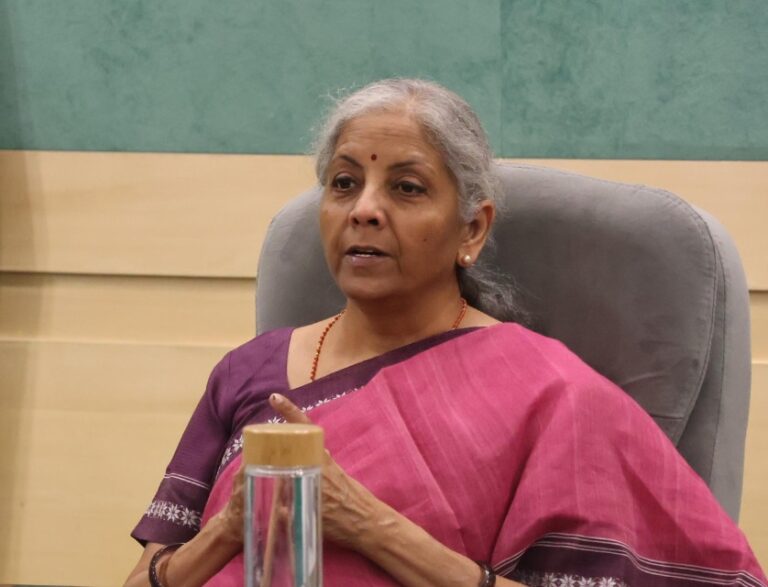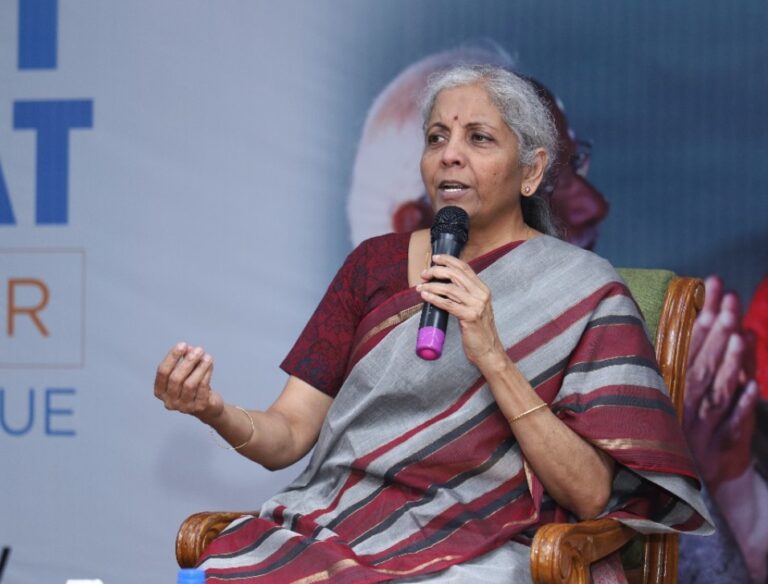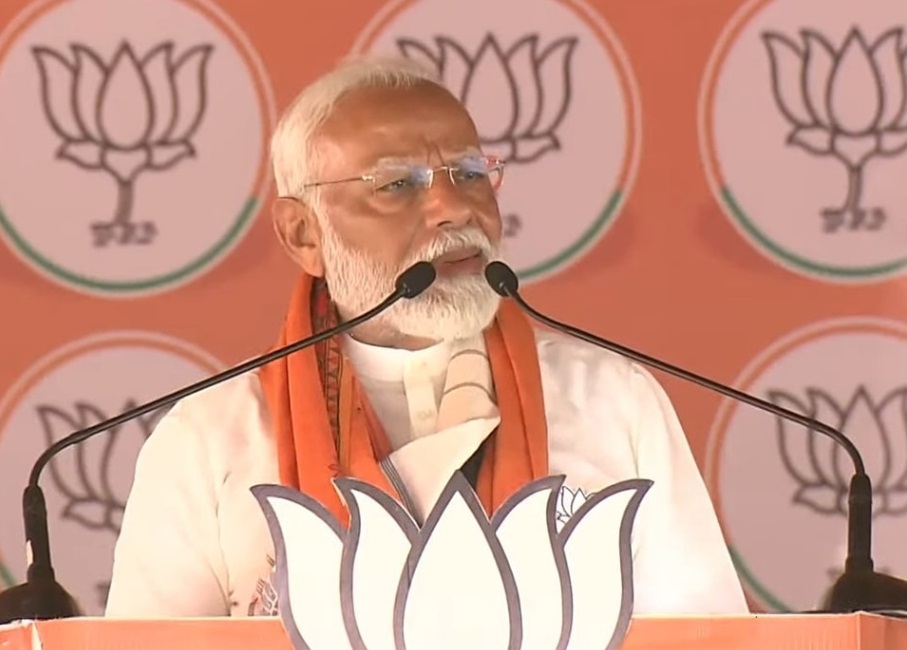Difference in announcement and implementation of 2019 Budget, Big failed Modi govt ! Just a few days between the end of the 18th Lok Sabha elections. During the election campaign, Prime Minister Modi has, however, resorted to emotions rather than promises this time.
Table of Contents
ToggleWhat work the Modi government has done in 5 years?
Finance minister Nirmala Sitharaman also made headlines with these promises. But the government does not seem to be focusing on spending money on schemes as promised in the budget.
On the contrary, money has been deducted from many public welfare schemes.
Due to the government’s foresight and lack of study, one scheme has become the same as another, making it difficult to implement it.
Infrastructure development, agriculture sector, health and education sectors, rural economy have all seen huge differences in the government’s budget announcements and implementation.
There has been a clash between three pension schemes each while announcing schemes in the name of the scheme to create a surprise.
During the budget announcement of 2029, the finance minister had announced to provide pension benefits to about 3 crore small traders and shopkeepers in the country.
2019 Budget, PM Karmayogi Mandhan Yojana
But with the passage of time, this scheme also disappeared into the pit of oblivion. The promises made in the budget have also remained just promises.
Although Rs 750 crore was supposed to be spent on the scheme in the first year, it was later found that only Rs 155.9 crore was spent on this scheme in the first year.
The gap between the funds earmarked for the first year of the scheme and the funds spent is Rs 594 crore. The amount of money allocated to this scheme has come down drastically in the subsequent financial years.
According to the latest budget data, only Rs 3 crore has been allocated for this scheme in the previous financial year. Out of which Rs 10 lakh has been spent in the name of implementing the programme of this scheme.
It has been five years since the scheme was launched but it has spent only Rs 162 crore on the scheme during this period.

But in five years, the government was supposed to spend Rs 1,133 crore on this scheme. According to the data, only 50,000 people were involved in this scheme till 2023.
When the parliamentary standing committee asked the government about such failure of the scheme, the government said that there is a rift between the two schemes as there is another pension scheme of the same name as the scheme.
According to the government, people have merged the Pradhan Mantri Karma Yogi Maan Dhan Yojana with another scheme called Pradhan Mantri Shram Yogi Maan Dhan.
The scheme was launched just four months before the launch of the Pradhan Mantri Karma Yogi Maan Dhan Yojana.
This was an extreme example of the government’s lack of proper planning as well as irresponsibility. The Prime Minister’s Shram Yogi Maan Dhan Scheme was supposed to cover a total of 42 crore unorganised sector workers.
But this pension scheme has also failed. Since its inception, only 43 lakh workers have been associated with the scheme. It may be recalled that in 2015, the Narendra Modi-led BJP government launched another scheme called the Atal Pension Yojana.
This scheme was also meant for unorganised workers. Various questions have also been raised about this Atal Pension Yojana scheme. Banks in particular have forcibly included their names in the Atal Pension Yojana without the permission of customers.
The government is facing criticism over this. Attempts were thus made to involve customers in the scheme in order to celebrate the success of the scheme.
Meanwhile, the government has tasked a think tank to evaluate the Shram Yogi Maan Dhan scheme. This think tank recommended discontinuing the scheme and merging it with the Atal Pension Yojana.
Moreover, the ministry itself was thinking of integrating the pension scheme of shopkeepers with the pension scheme of unorganised workers, according to the report of the Standing Committee of the Bull Parliament.
The failure of these three pension schemes has proved how accountable the Narendra Modi government is to the common man. However, ordinary citizens have already forgotten about these schemes.
Budget of The Union Government from the financial year 2019-20 to the financial year 2023-24
After reviewing the budget, it has been found that out of the 906 schemes of the government, only 651 schemes or 71.9 per cent of the schemes have received grants.
One in every five schemes, the data says, is spending half or less than what the government has promised.
It is to be noted that most of the schemes that the government has deducted are welfare schemes. As many as 75 per cent of the welfare schemes have received less money than what was promised by the government.
Apart from this, there are also infrastructure schemes like upgradation of railway tracks, road construction, renewable energy, etc. to cut funds.
The government has also cut a lot of funds from these schemes. The government has cut funds for a total of 73 per cent of infrastructure schemes against the budget promise.
Similarly, some of the other areas where there are huge mismatches in budget announcements and receipts of grants are schemes related to defence, industry and PSU respectively.
Although most of the schemes were less than what was promised within five years, the total actual cost of the 906 schemes is more than the estimate of the total budget.
There are two reasons behind this. First, government spending on Covid-related schemes is disproportionately higher than budget estimates.
Secondly, the government had increased spending on certain welfare schemes on the eve of the 2024 Lok Sabha elections.
Apart from these schemes there are several other schemes which are fully funded by the central government. It is the Central Government that is fully responsible for the success or failure of these schemes.
Schemes taken for the benefit of farmers
The MSP scheme saw real expenditure only during the 2019 and 2014 Lok Sabha elections.
But not a single rupee has been spent on this scheme in the three years between 2019 and 2024 Lok Sabha elections.
There is a pension scheme called Pradhan Mantri Kisan Maan Dhan Yojana. This scheme is a pension scheme for small and marginal farmers.
Like karma yogi maan dhan and shram yogi maan dhan, this scheme has also failed. Though the scheme was supposed to cover 3 crore farmers, only 7.8 per cent of farmers have been included in the scheme since 2019.
Similarly, in 2020, a scheme was launched to form and promote 10,000 farmer producer organisations.
The government has not even tried to fulfil the promises made for the scheme in the last four years.
The objective of the scheme was to increase the bargaining power of their crops, reduce the cost of production, and help them earn more money by selling their crops together.
Just like the agriculture sector, the health sector is also witnessing a contrast to the union government’s budget commitments.
During the second wave of the Covid pandemic in 2021, the Central Government announced the Prime Minister-Ayushman Bharat Health Infrastructure Mission.
Which is considered to be India’s largest scheme for public health infrastructure since 2005. The scheme is run in partnership with the states though some elements are fully run by the Centre.
Through this scheme, the Central Government planned to spend more than Rs 9,339 crore over five years for setting up of national institutes for strengthening important care and disease research centres, among other things.
But even after the last three years, only Rs 1,373 crore has been spent on this scheme. Which is only 14.17 per cent of the amount earmarked for the total expenditure.
Central Government’s commitment to the education sector
In its 2019 election manifesto, the BJP had promised to construct the Eklavya Model Residential School which provides reservation for more than 50 per cent scheduled tribe students.
The aim was to improve access to education for tribal children. The Ministry of Tribal Affairs had set a target of constructing 740 such schools by 2025-26. But by December 2023, only 401 such schools have been able to build.
The scheme was promised to spend Rs 5,943 crore in the financial year 2023-24. But despite the parliamentary standing committee’s assurance, only 41.6 per cent of the total funds have been spent on the scheme so far.
So the Parliamentary Standing Committee is apprehensive about whether the scheme will be able to exceed the target in due course of time. Because it takes 2.5 years to build a school.
Similarly, in the case of fellowships, the government’s expenditure has come down. In 2019-20, the expenditure on fellowships was 68 per cent against the budget commitment.
In the financial year 2021-22, the expenditure came down to 40 per cent. On the other hand, the number of fellowships awarded has also decreased by 30 per cent in 2022-23 as compared to 2018-19.
The government is also spending much less money than announced in the budget for the development of the rural economy.
Finance Minister Nirmala Sitharaman, in her maiden budget speech, spoke about how the government would help create 75,000 skilled rural entrepreneurs in the agri-rural industries sector through a scheme called Aspire.

In the next four financial years, the government had pledged to spend Rs 137 crore in unison.
But on the contrary, the government has spent only Rs 31 crore during this period. Which is only 22.7 per cent of the amount promised.
Along with Aspire, Sitharaman mentioned sfurti, a scheme for upgradation of traditional industries.
For this scheme, the government had earmarked Rs 334 crore in the financial year 2022-23. But the government has spent only Rs 1.95 crore.
Similarly, the expenditure for the scheme in the next financial year was fixed at Rs 280 crore. But it costs only Rs 2.5 crore.
This information has been mentioned in a report published in this regard after reviewing the budget presented in 2019 by an organisation called The Reporter Collective.
The report, based on data from the report of Raashi and the Standing Committee of Parliament mentioned in the 2019 Budget, clarifies how the central government has only made promises in the budget.
The importance given to fulfilling that promise is made clear by the fact that the expenditure of money and the money is deducted against the scheme.
Even then, whether it is the opposition political parties or the influence groups, all are silent to question these issues. Of course, there is no reason for this either.
The people have forgotten everything by being impressed by the flowers that are poured in every year in the budget. The opposition and the people have not realised the need to judge what was there and what was implemented in the previous budget.
How 400 seats BJP will make possible
For the BJP, which says it is 400per this time, such an answer has not come out in anybody’s equation.
What if the BJP does not get the magic number required to form the government? Those are the questions that have touched the BJP now.
The pace of elections is not the same as it used to be. Work may not be accomplished this time just by the magic of Modi.
It seems impossible to maintain the continuity of the state with the slogan of Hindutva alone. That is why the BJP seems to be in the campaign to purify itself.
Nadda, who is the national president, wants to say the BJP has grown up. National politics The ideology and guardianship of the RSS has become worthless for them.
After hearing these things, Nagpur too thinks – they were feeding milk all these days and burying a venomous snake calf called the BJP. Growing up, the snake cleaned the brahmakhuti on the palate of Nagpur.
The party that is set to ignore the sacrifices and ideals of Atal Bihari Vajpayee has evaluated itself as not the same as Vajpayee’s time and Modi’s time.
Apart from the Modi-Amit Shah force, no one can understand what is the trend within that party.
In the beginning, the BJP was incompetent. The blessings of the RSS were needed to convert that inability into a capability.
After the BJP gained power today by capturing Delhi with that blessing, the BJP will continue to be an example of betrayal because of this politics in the face of the RSS.
Suddenly, the BJP is on a mission to save itself from communal sentiments. Rss has started the campaign by sacrificing it. However, the responsibility of strengthening the organisational base of the BJP is still handed over to the RSS leaders.
The organisational secretary of the party is a responsible post. Rss leaders are appointed to that post either in the state or national arena.
The political circle of Assam knows how powerful the man in this position, who once took a bag around his neck, was.
The ideological battle between the RSS versus the BJP, the nine BJP vs the old BJP is now seen in assam as well. Similarly, there is a conflict between the parties in the camp of two powerful leaders who are positioned at both ends.
Contrary to such a stand of the BJP in the national context, there is an expression of discontent and anger within the party in Assam as well.
On important days like polling, there has been a backlash in favour and against the leaders who have received show cause notices criticising their own party’s government.
The BJP MLA alleged that the style of speaking and his speech have damaged thousands of votes of the party.
The BJP leader also sent a letter to state president Bhabesh Kalita covering issues such as the old BJP, who gave how much time, how the old BJP struggled to take the party forward.
This incident in the BJP has been caught in the eyes of the people. Jp Nadda’s comments prove that. Now the RSS is scold in the BJP.

